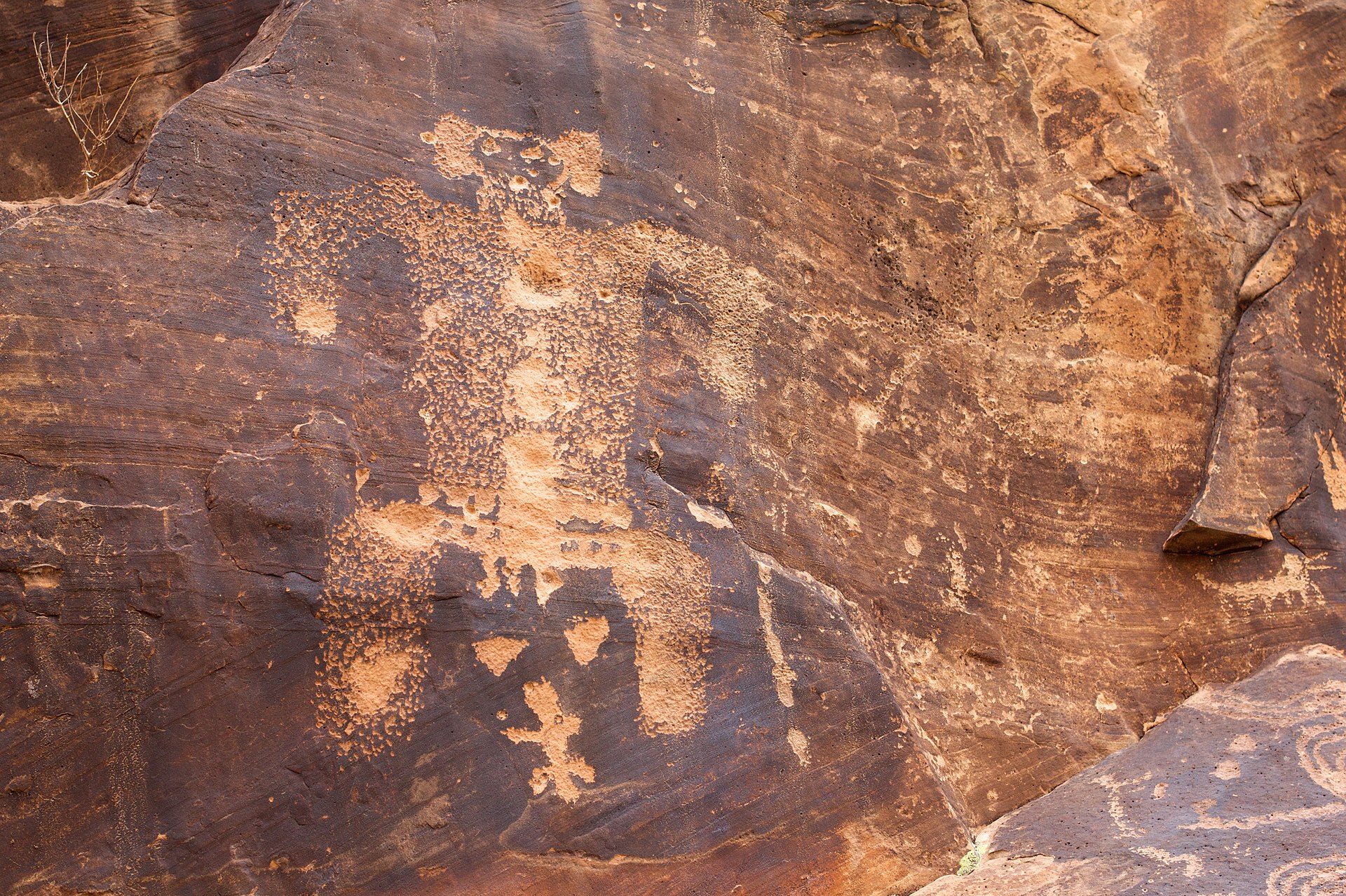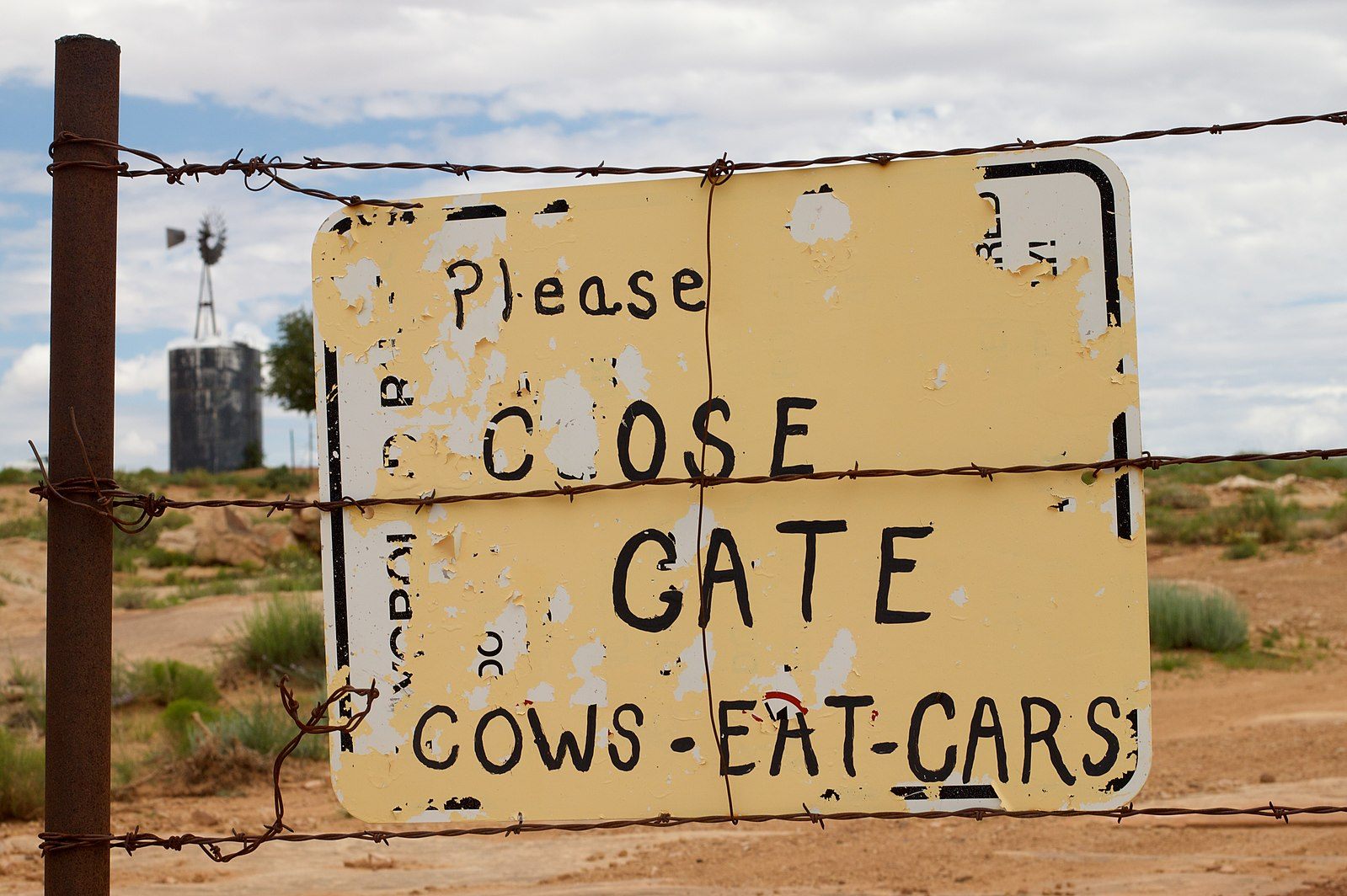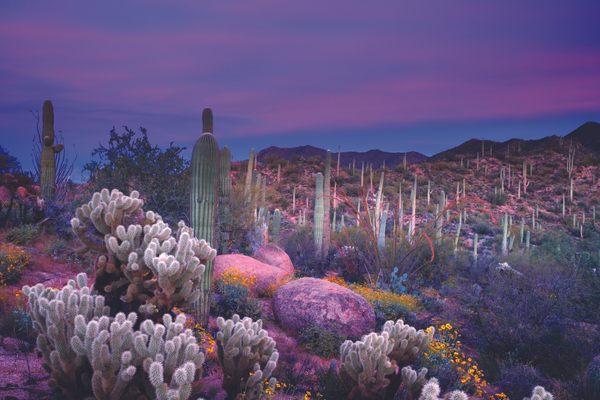The Arizona Cattle Ranch Hiding 10,000 Year-Old Petroglyphs
Brantley Baird’s Rock Art Ranch offers tours of canyon-wall petroglyphs and a stunning collection of ancient pottery.
As a small child in the 1940s, Brantley Baird lived in Show Low, Arizona, a town over a mile above sea level in the White Mountains. He and his brother rode their horses—bareback—to the one-room schoolhouse each day, tying up the animals to wait outside until school finished. It was an extreme place to live, Baird remembers: “The snow would get up around the horse’s belly in winter.”
In 1948, when Baird was five years old, the family moved to a ranch in Winslow, Arizona, slightly lower in altitude and easier living for humans and cattle alike. The land they purchased was also shockingly rich in history: the 5,000-acre cattle ranch contained a canyon covered in thousands of ancient petroglyphs created by Ancestral Pueblo people. Decades after the family bought the ranch, archaeologists would carbon date the glyphs, finding them to be up to 9,000 years old, according to some estimates. At the time, however, the family was more concerned with keeping their cattle healthy and profitable. “Back then,” Brantley says, “you wasn’t worrying about a few petroglyphs on the walls. You were trying to make a living with a few old cows.”
As Brantley grew up, he uncovered more of the land’s history and artifacts. He found his first piece of pottery at eleven years old: “Blew out of a sand bank,” he remembers. In the decades since, he and his family have uncovered dozens of pottery pieces—many in near-pristine condition. “You never know what you’re going to find if you leave out here in the morning on an old horse,” Brantley says. “Sometimes you’ll find it in the bottom of a canyon after a flood, or find it under ledges, you never know. The people lived everywhere, and stuff got covered up over the years.”

Now, the pottery collection lives in a museum that Brantley and his family built on the property. Many of the pots are either narrow-necked jugs used to carry water out from the canyon or wider-necked jugs used to store water and crops in holes dug into the ground. Most carry elaborate geometric patterns that the Ancestral Pueblo people are now known for. A third style of water jug was left along the road at 5-mile intervals, which would be covered with a rock (to avoid evaporation) and a ladle: “If you go 5 miles in this country without water,” Brantley says, “you’re going to be hurting.”They even found a mug, handle and all. “And then we’ve got a square pot we very seldom ever see,” Brantley says. A member of the Hopi tribe told him it’s because the shape is hard to clean, and hard to make. Most of the pottery in the museum is between 1,000 and 1,200 years old; before that, Brantley claims, the Ancestral Pueblo people mostly used baskets for transportation and storage.
The Baird family built the museum 25 years ago, around the time they began offering tours of their property. They amassed an impressive collection of pioneer artifacts, some of which are on view and some of which live in a larger museum they opened on Route 66 between Winslow and Holbrook, which includes multiple covered wagons and a plethora of farming supplies.

A covered wagon also greets visitors who pull into the parking lot at Rock Art Ranch. Brantley offers tours free of charge and his granddaughter Tori leads most tours. Once visitors have learned about the pottery collection, they take their own cars—led by Tori—three miles across the property, where a team of archaeologists excavated a once-inhabited ancient pueblo. Still visible are a few dwellings, made from rocks and mud; a “burnt” spot where they cooked all their food, according to Brantley; and a few dug holes in the earth for storage. Lower in altitude is a kiva, a space used for worship and rites.
Next up is another 3-mile drive to the main event: the canyon. The canyon is 1,000 feet straight down on all sides except one: “The good Lord only made one place they could get down to get water or bathe,” Brantley says. While the earliest dwellers had to learn to navigate the climb down, Brantley installed steps and a handrail, to ensure the safety of his visitors. Down in the canyon, all the petroglyphs are visible. As to their meaning, Brantley says, “Everyone has their own theory, their own story.” Including the archaeologists that he invited to excavate the ruins and study the petroglyphs. Some of the most popular and striking glyphs depict a woman giving birth, and a woman with a skirt like a bear paw.

Here, Brantley or Tori will leave the visitors to explore the canyon, and swim in the water if they like; even skinny dipping is allowed, he says, as the closest neighbors are 17 miles away. It’s important to him that people are able to experience and enjoy the land free of charge. “People say, ‘Do you own this place?’” Brantley explains. “And I say no, the good Lord owns it, I’m only here to take care of it. It belongs to everybody. It’s history, and we want to share it with people.” Once visitors are done, they take the road off the ranch, and call Brantley to confirm they have left safely.
Today, Brantley is still actively ranching the land. He’s also been living there for the last six years since his wife died. He passed down his home to Tori, who also manages the many phone calls they receive on the ranch. Brantley (and a few of his four dogs) still greet visitors as they pull into the ranch. “I usually try to be here to greet the people a little bit, and tell them a few lies,” Brantley says with a laugh. “Tell them a few stories.”

This post is sponsored by Visit Arizona. Click here to explore more.

























Follow us on Twitter to get the latest on the world's hidden wonders.
Like us on Facebook to get the latest on the world's hidden wonders.
Follow us on Twitter Like us on Facebook